New Years Eve 2010 At The Elks (Page Three)
New Year = A New Life! Decide today who you will become, what you will give how you will live.
Santa Ana Elks News Years Celebration
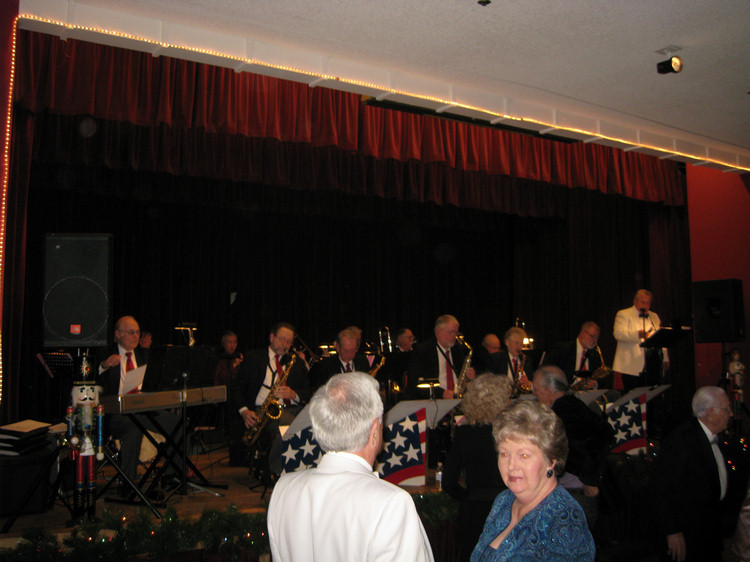
Great dance music all night. The stage was filled with musicians
Did you know? - In theatre, the stage (sometimes referred to as the deck in stagecraft) is a designated space for the performance of theatrical productions. The stage serves as a space for actors or performers and a focal point for the members of the audience. As an architectural feature, the stage may consist of a platform (often raised) or series of platforms. In some cases, these may be temporary or adjustable but in theaters and other buildings devoted to such productions, the stage is often a permanent feature.
There are four types of stages that vary as to the usage and the relation of the audience to them. The most common form found in the West is the proscenium stage. In this type, the audience is located on one side of the stage with the remaining sides hidden and used by the performers and technicians.
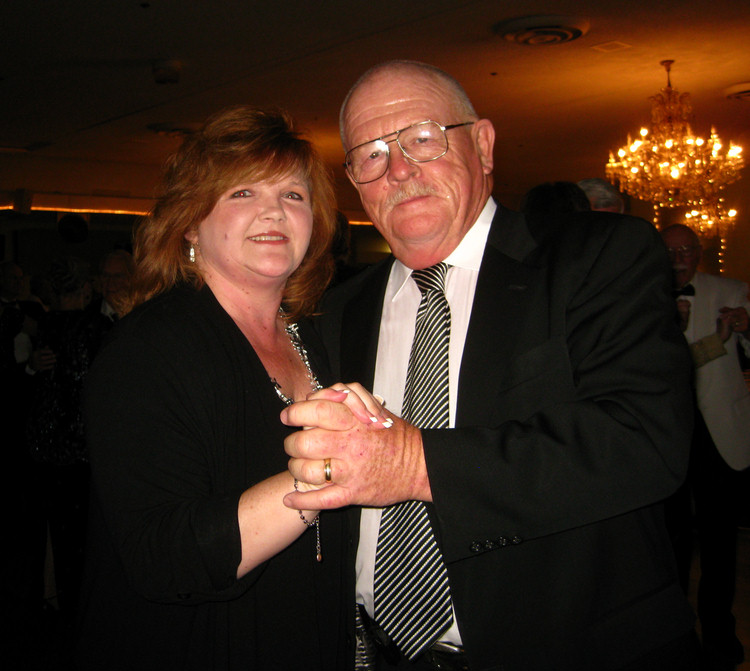
Robin and Paul

Donna has horns??
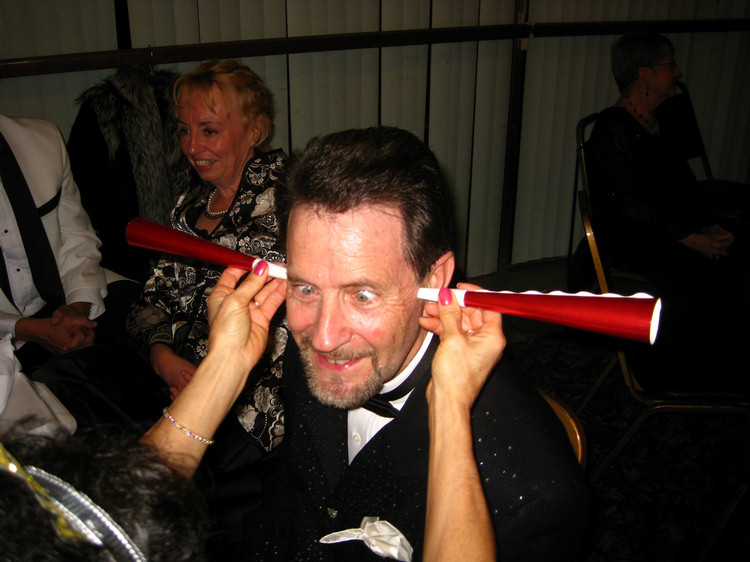
I can hear you better now!
Did you know? - A hearing aid is an electroacoustic body worn apparatus which typically fits in or behind the wearer's ear, and is designed to amplify and modulate sound for the wearer. Earlier devices, known as an "ear trumpet" or "ear horn", were passive funnel-like amplification cones designed to gather sound energy and direct it into the ear canal.
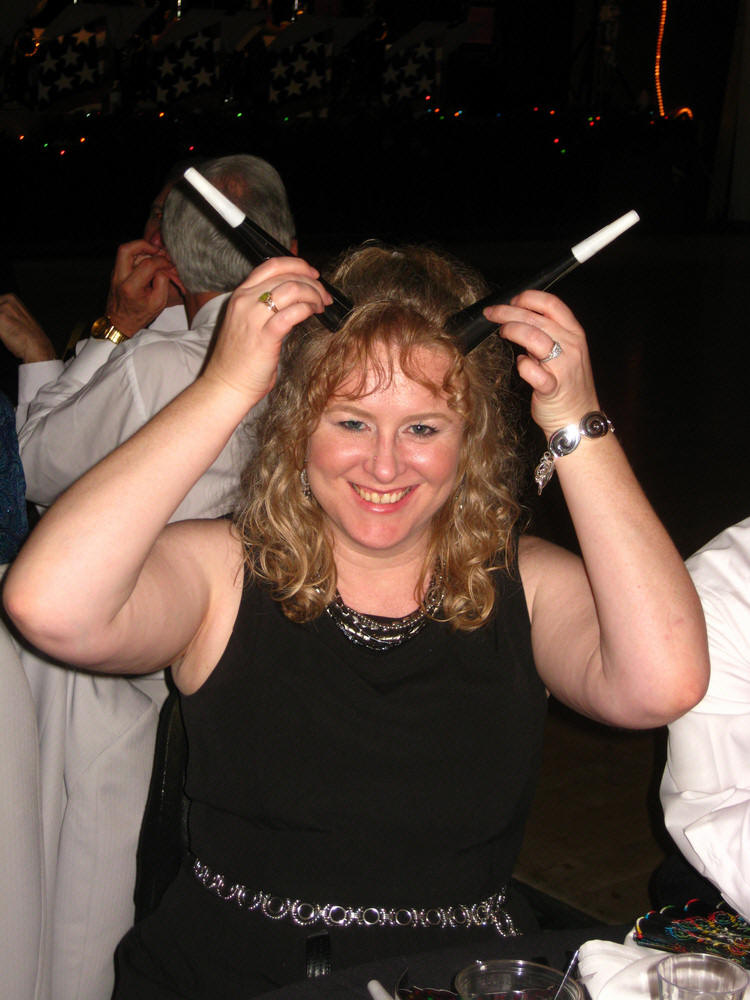
Little devil she is!

One eyed one horn purple people eater!

At least someone is stober this evening!

Del got a new tie for the holidays
Did you know? - The necktie (or tie) is a long piece of cloth worn for decorative purposes around the neck or shoulders, resting under the shirt collar and knotted at the throat. Variants include the bow tie, ascot tie, bolo tie, and the clip-on tie. The modern necktie, ascot, and bow tie are descended from the cravat. Neck ties are generally unsized, but may be available in a longer size.

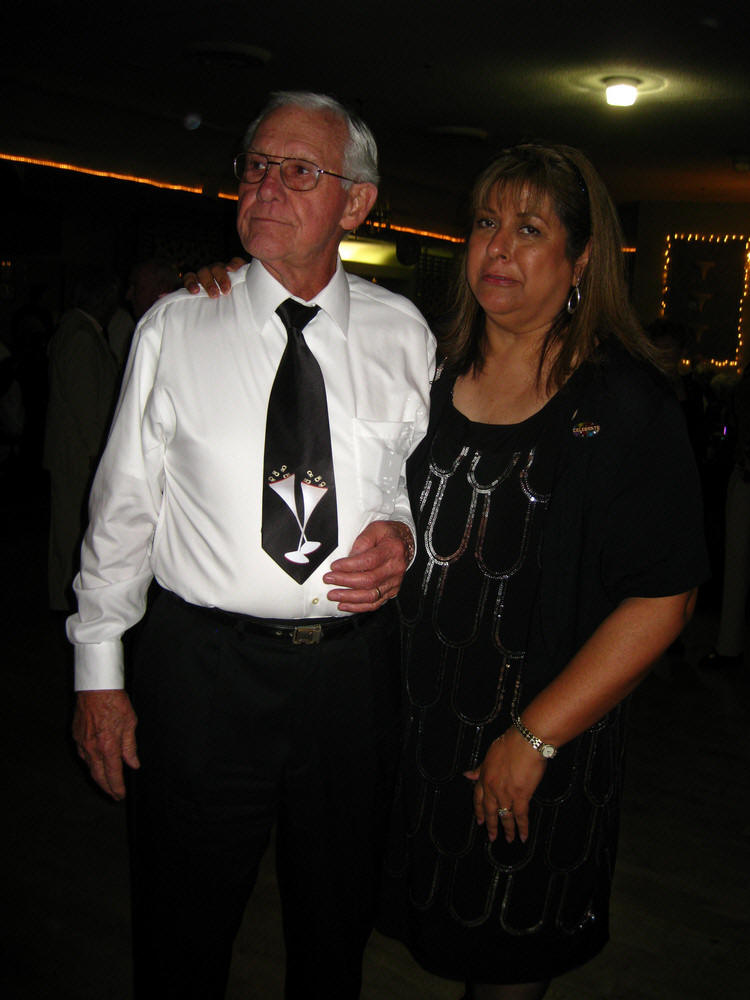

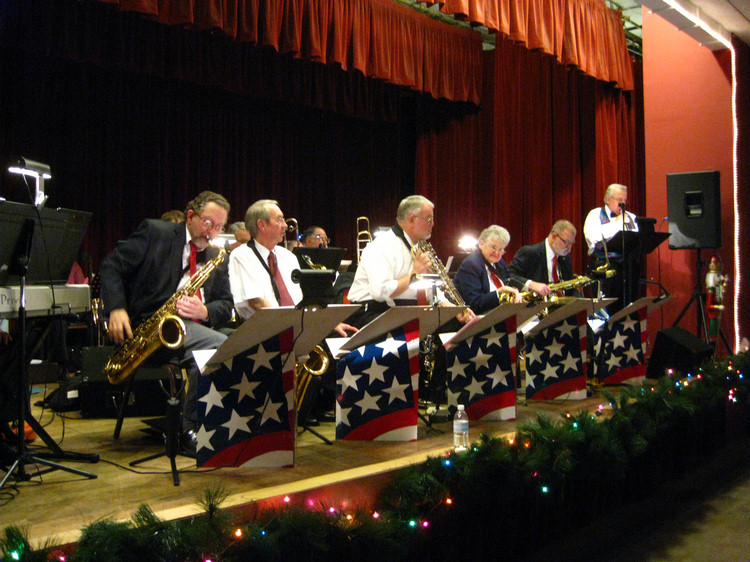
The music was great all evening!
Did you know? - The saxophone (also referred to simply as sax) is a conical-bored transposing musical instrument considered a member of the woodwind family. Saxophones are usually made of brass and are played with a single-reed mouthpiece similar to that of the clarinet. The saxophone was invented by Adolphe Sax in 1841. He wanted to create an instrument that would both be the loudest of the woodwinds and the most versatile of the brass, and would fill the then vacant middle ground between the two sections. He patented the sax in 1846 in two groups of seven instruments each. Each series consisted of instruments of various sizes in alternating transposition. The series pitched in B♭ and E♭, designed for military bands, has proved extremely popular and most saxophones encountered today are from this series. A few saxophones remain from the less popular orchestral series pitched in C and F.
While proving very popular in its intended niche of military band music, the saxophone is most commonly associated with popular music, big band music, blues, early rock and roll, ska and particularly jazz. There is also a substantial repertoire of concert music in the classical idiom for the members of the saxophone family. Saxophone players are called saxophonists.

The chair back was finally located
Did you know? - A decanter is a vessel that is used to hold the decantation of a liquid (such as wine) which may contain sediment. Decanters are normally used as serving vessels for wine. Decanters vary in shape and design. They are usually made of an inert material (such as glass) and will hold at least one standard bottle of wine (0.75 litre). A similar kind of vessel, the carafe (pronounced "kə'ɹæf"), is used for serving wine as well as other drinks, but is not supplied with a stopper.
Throughout the history of wine, decanters have played a significant role in the serving of wine. The vessels would be filled with wine from amphoras and brought to the table where they could be more easily handled by a single servant. The Ancient Romans pioneered the use of glass as a material. After the fall of the Roman Empire, glass production was scarce causing the majority of decanters to be made of bronze, silver, gold, or earthenware. The Venetians reintroduced glass decanters during the Renaissance period and pioneered the style of a long slender neck that opens to a wide body, increasing the exposed surface area of the wine, allowing it to react with air. In the 1730s, British glass makers introduced the stopper to limit exposure to air. Since then, there has been little change to the basic aspects of the decanter.
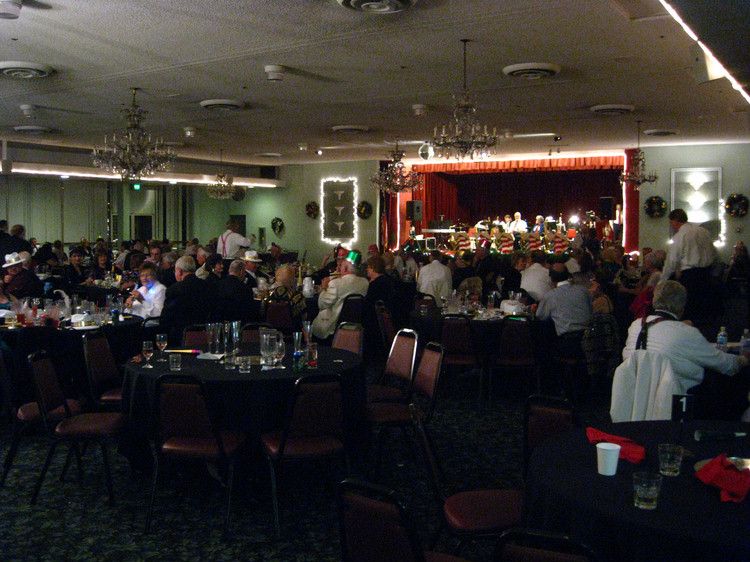
Good sized crowd
Did you know? - New Year in France is one of the most traditional and oldest celebrations, but in fact they do not have any "rule" as on what to wear. New year in France is also known as Jour des Étrennes. This celebration starts on January 1 when the people start wishing each other Bonne année, which is the same as happy new year, and ends at 6 January. They have a great show with fire works shot near the Eiffel tower. French people call New Year's Eve la Saint-Sylvestre. On this day they have a special feast called le Réveillon de la Saint-Sylvestre in which they have nice dishes like pancakes and flavoured duck or goose. They drink champagne, a white sparkling wine produced in the Champagne Region of France. They also drink vin chaud (hot wine), but sparkling cider is also common. They also have a festival cake called galette des rois which has sometimes a little king figure baked inside. They believe, like several other countries, that this nice dinner brings a nice year to the family.
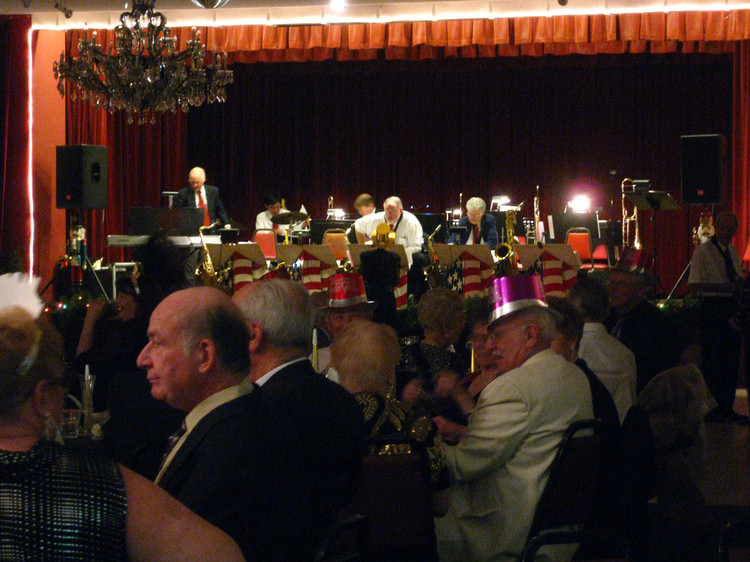
Did you know? - Because of the division of the globe into time zones, the new year moves progressively around the globe as the start of the day ushers in the New Year. The first time zone to usher in the New Year is just west of the International Date Line. At that time the time zone to the east of the Date Line is 23 hours behind, still in the previous day. The central Pacific Ocean island nation of Kiribati claims that its easternmost landmass, uninhabited Caroline Island, is the first to usher in the New Year.


The bartender was moving so fast he was a blur!
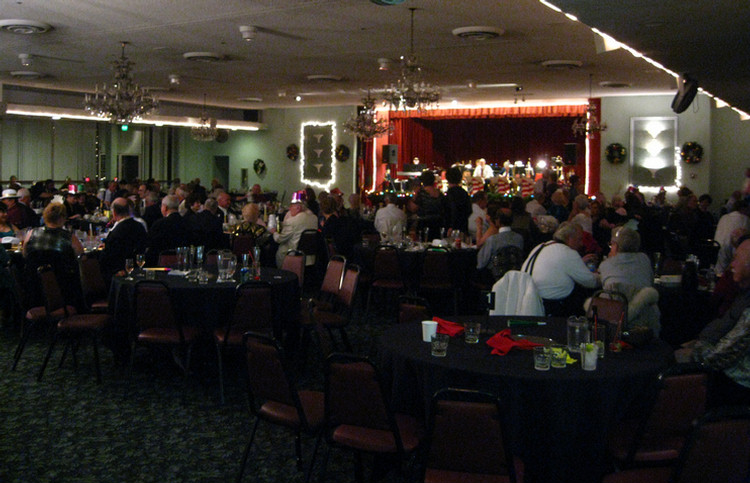
Dancing went on all evening
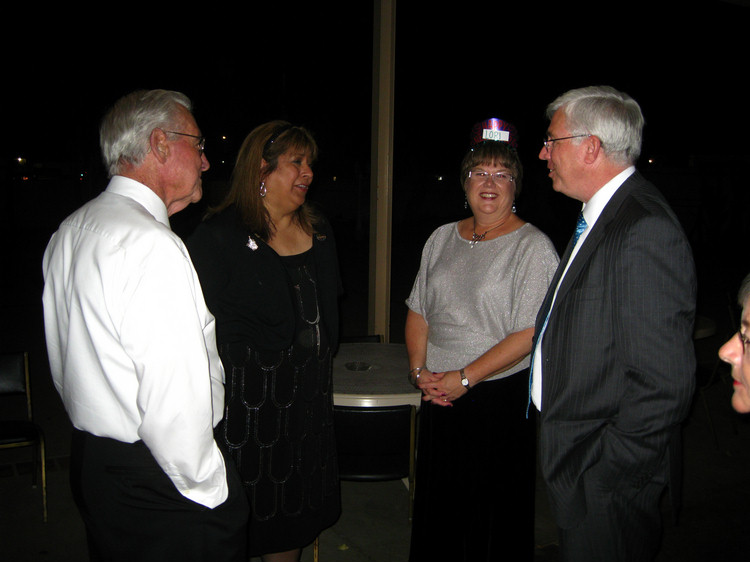

She is up to something!


Jan is taking it all in!

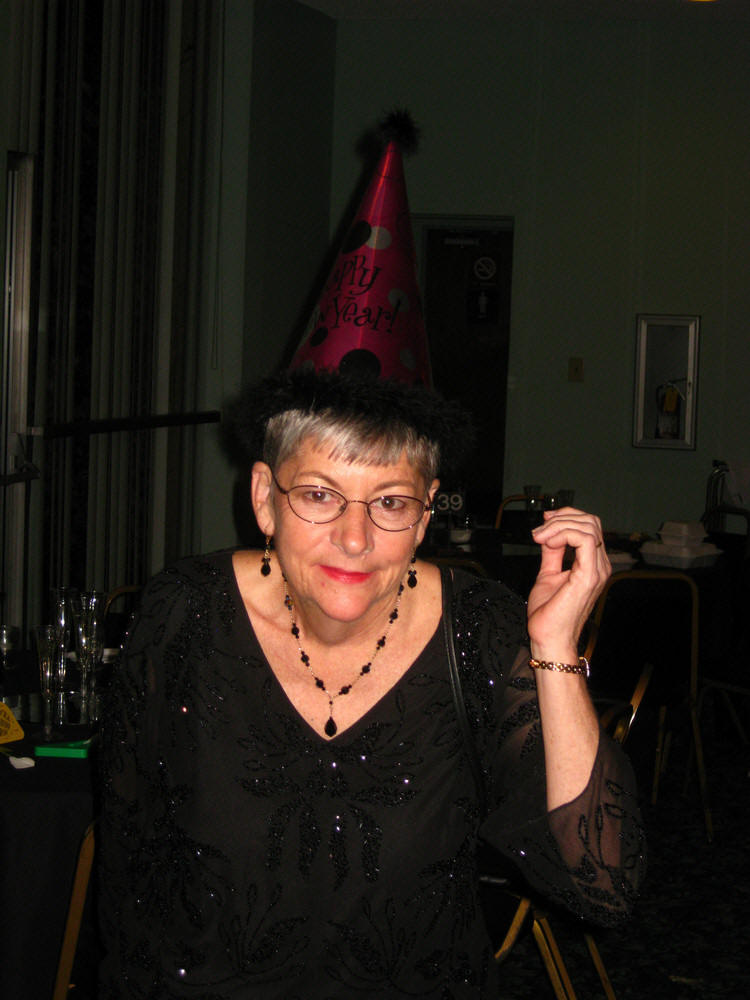

Apparently we all had a good time!